In today’s competitive marketplace, building strong customer relationships is paramount. Voice AI empowers businesses to achieve this by delivering the perfect blend of personalisation and context, ensuring customer satisfaction.
It provides a natural and convenient hands-free experience, making it more intuitive than typing and promoting wider accessibility for all users.
Beyond convenience, Voice AI offers several advantages: eliminates wait times, manages high call volumes efficiently, increases brand loyalty and ensures human-like conversations with customers in the most seamless way possible.
Suggested Reading: Voice AI: The Ultimate Guide
The current focus of voice AI is on improving customer experience or retention.
Let us examine how businesses use voice AI to transform the customer experience.
Applications driven by conversational AI run continuously so that users can access them at any time. Additionally, to enhance the customer experience, voice AI chatbots respond to queries in a human-like manner.


It refers to how long it takes customer service representatives to conclude a call. This parameter can be used to gauge customer happiness. In other words, if the average handle time is larger, clients must wait longer for a response. You can utilise voicebots to redirect calls to provide a fast response and AI-powered responses to handle issues.
Due to its immense capacity, voice AI can enhance business productivity and help us finish tasks faster. By automating customer journeys, identifying trends, lowering friction, and creating opportunities, it has taken on laborious duties. Businesses can extend their operations without significantly raising costs thanks to a variety of voice AI solutions.

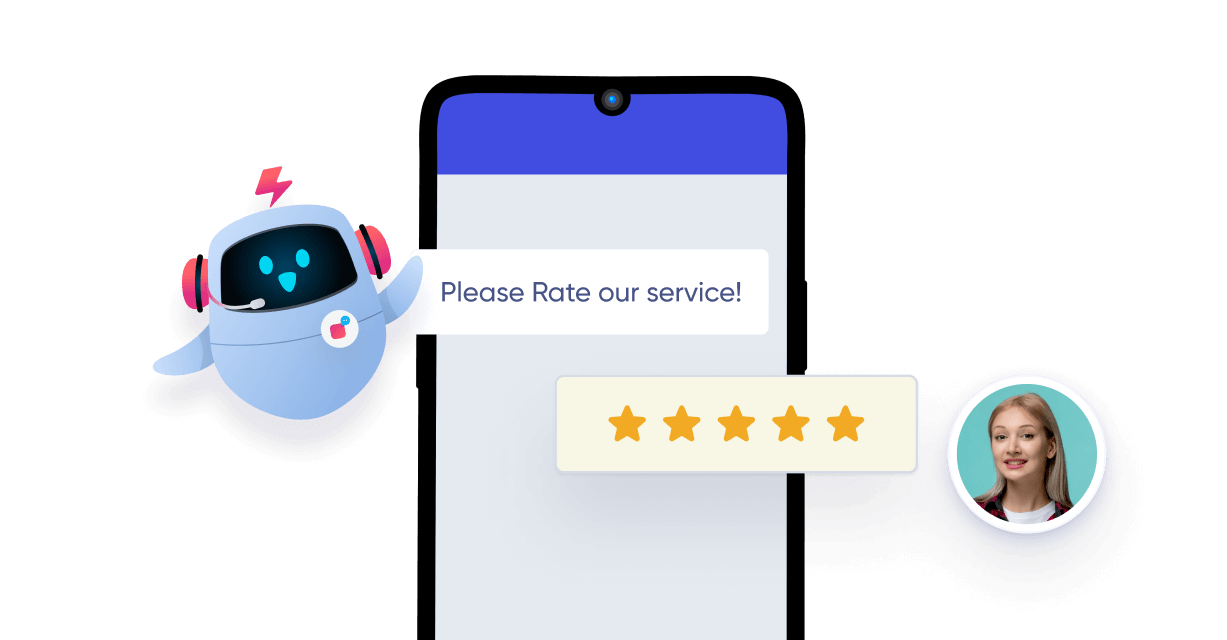
Voice AI can handle customer queries 24/7, offering a personalised experience by analysing past interactions and tailoring responses. It recommends products based on purchase history and suggests loyalty program rewards. For first-time customers, it analyses keywords to personalise its responses, enhancing customer satisfaction and smoothing the onboarding experience.
Integrating voice AI into your customer support operations can significantly reduce costs by efficiently handling a high volume of inquiries. Additionally, implementing a knowledge base with self-service options like video tutorials and guides can empower customers to find answers independently.
This approach reduces overall costs by minimising staffing needs and lowering the cost-per-call while allowing human representatives to focus on more complex issues.


Voice AI can be a powerful tool for gaining valuable insights from vocal data including recordings of calls and interactions. By analysing speech patterns, tone, and even silences, it can understand customer sentiment and preferences. These insights can be used to distinguish between different speakers and identify trends towards particular services. This allows companies to target outreach, personalise service interactions, and identify areas for improvement based on variations in customer experiences.
With artificial intelligence, voice-enabled support is limitless. Below are a few features that can help you understand what voice AI can do for your business, and why to opt for it.
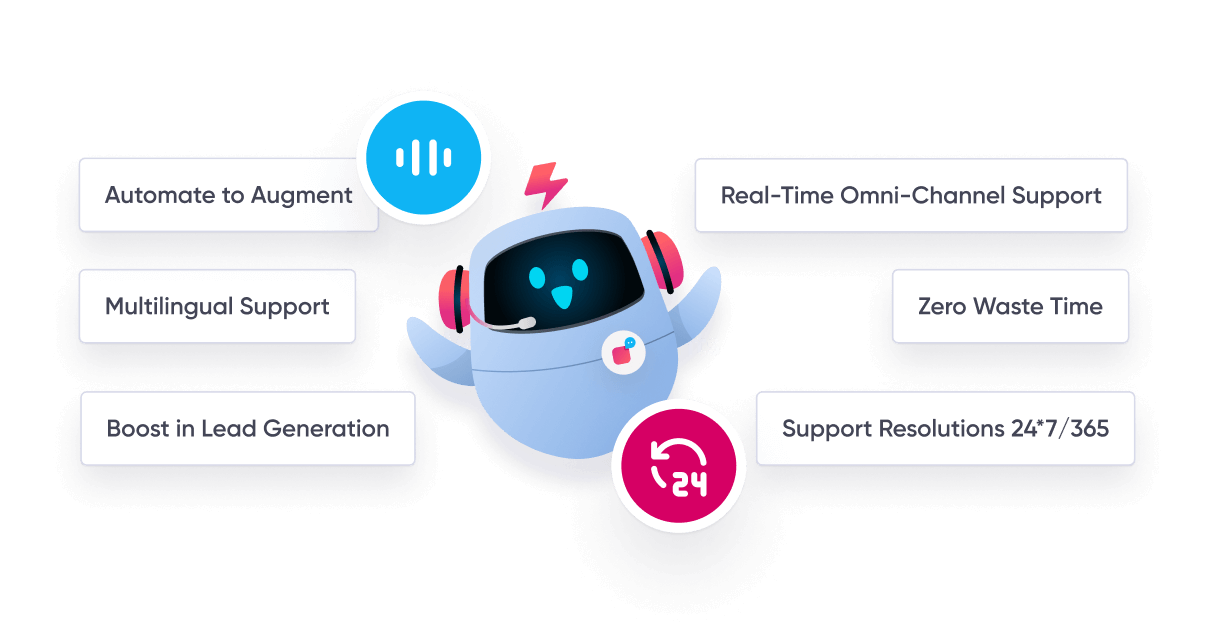
Our Voice AI-powered bots are the front face of our artificial intelligence-based technology. Truly transforming businesses by seamless interaction of the agents with their consumers, leading to the delivery of a frictionless customer experience.
We offer accurate and coordinated support across different channels, such as phone calls, chats, emails, and social media. Skilled in omnichannel interaction, our customers can count on connection availability in any channel they prefer.


Grow more presence on customer sentiment easily. With the help of in-depth voice data analysis, businesses have the possibility to identify customer emotions and problems and take protective actions.
Our multilingual strength can be a functional asset for your global audience. We provide voice AI that is language-agnostic and can be used by businesses to offer support in various languages, giving customers the option of using their native language. Now, you can easily boost the number of customers and ensure that no clients are left behind.
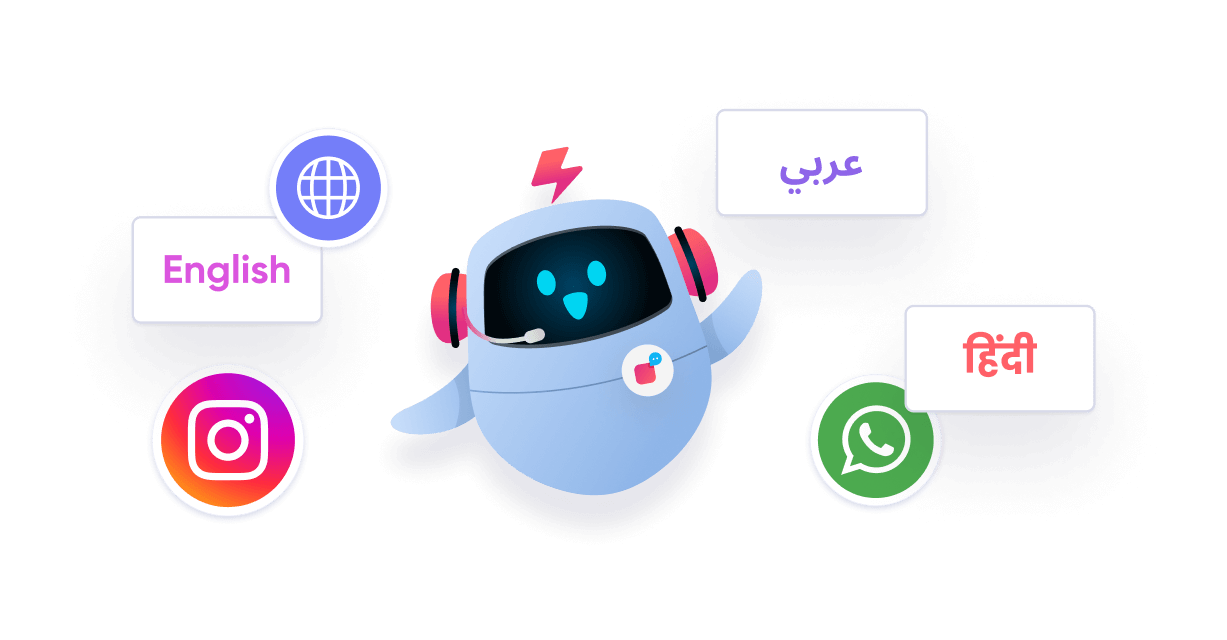
Despite the numerous advantages of voice AI technology, companies sometimes face issues
in implementing the tool in their services. Some of its prominent limitations are as follows.
To provide value to customers, a voice bot conversational AI has to be highly accurate. The Word Error Rate (WER) is a metric to evaluate this accuracy by adding the wrong words. It goes like this: WER= S+D+I/N = S+D+I/S+D+C S refers to the number of substitutions, D means the number of deletions, I implies the number of insertions, C stands for the number of correct words, and N is the number of words present in the reference. Often, background sounds like cross-talks, white noises, etc. can create disruptions in the accuracy. Also, complicated jargon based on specific fields leads to a lower level of accuracy.
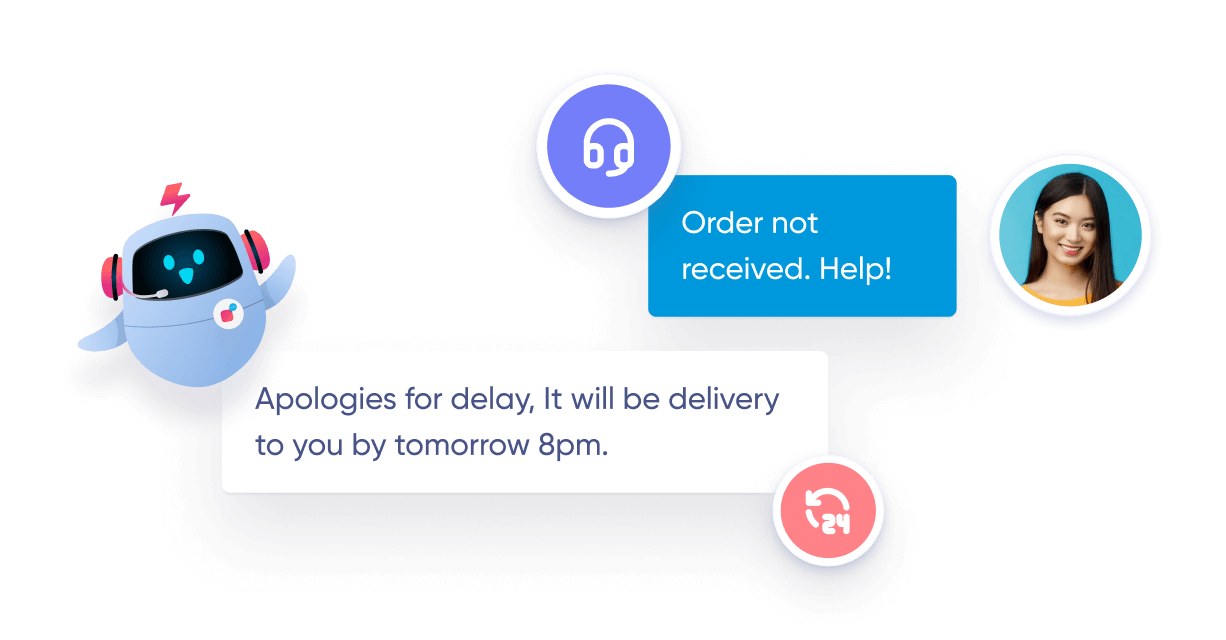

Security and privacy are major issues impacting the implementation of voice technology. This is why several users do not want to use voice bots for tasks involving sensitive data. A lack of trust among users is a common issue that scares them from using voice assistants to make online purchases. They think that allowing devices to collect data can make them vulnerable to security threats like hacks.
The high capital and infrastructure required to use this technology is one of the fundamental hindrances. It is a costly process to develop and implement an SRS in the long run. Even after the deployment of SRS, it is a challenge to have ample resources for improving its performance.
Suggested reading: Voice AI for Enhanced Customer Interaction

One of the ways that artificial intelligence is developing most quickly is through conversation. Some companies are presently using artificial intelligence to provide customer service responses that are human-like. As a result, our tastes have been reflected throughout the full context of our interactions with machines.
Today, it is essential as well as challenging to fulfil customers’ needs and expectations. Notably, customers spend more money with businesses that provide a positive conversational experience. To ensure a positive customer experience, you must make sure your company is quick to recognize and address issues with customers.
The ability of voice AI to communicate with individuals around the world while translating between languages contributes to a personalised customer experience. Voice AI is extremely handy in making related product recommendations to a customer who has a history of making specific purchases. Thus, individualised customer services have paved the way for increasing your income.
Suggested Reading: Voice AI: What is it and How Does it Work?
Be it planning your voice AI strategy to purchasing your voice assistant,
having a plan of action can help you increase user adoption.
Apart from the common usages like getting updates on news, traffic, creating shopping lists, and playing music, users must know the variety of its other features. So, focusing on educating users through examples, tips, and guides from time to time will allow them to discover new things related to voice AI technology.

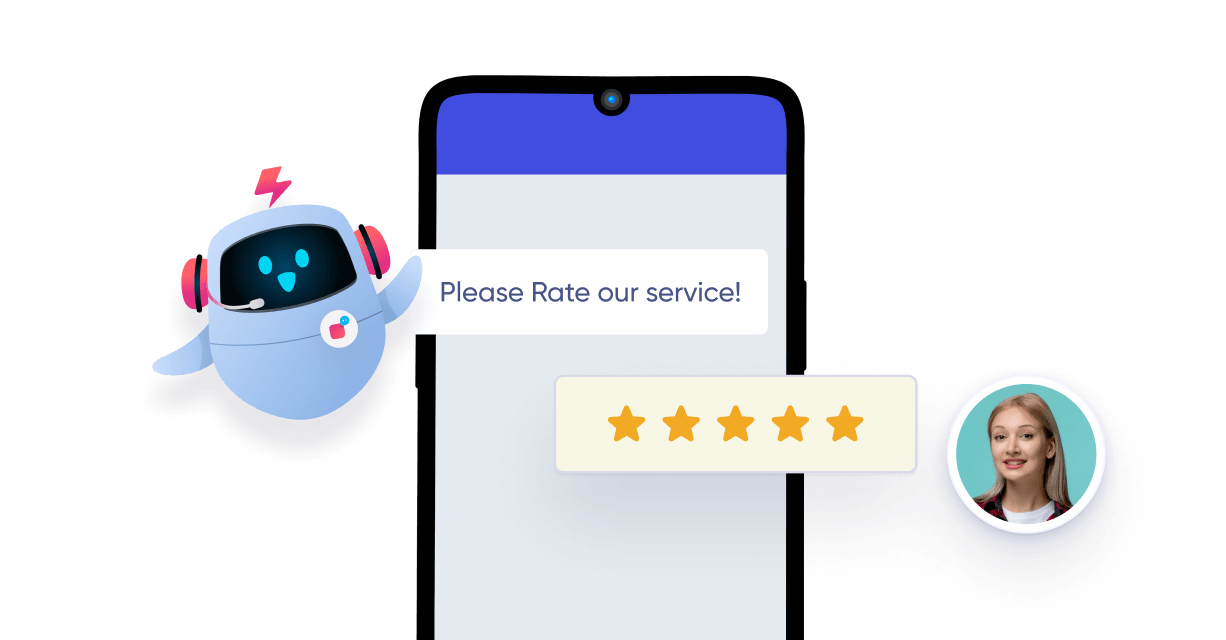
Having a superb voice user interface will go a long way in getting you positive reviews and increasing adoption. The conversational AI must have the potential to understand complex queries so that users can continue resorting to them. In addition, having an authentic voice persona and maintaining voice and tone will come in handy to initiate a conversation with users.
Through frequent testing and improvements, you can increase the accuracy rate of your voice AI tool. Moreover, try and include more domains and opt for updating your software to bring about the latest advancements in voice AI. In this case, considering user experience and reactions to the voice experience is critical to increasing overall consumer retention.
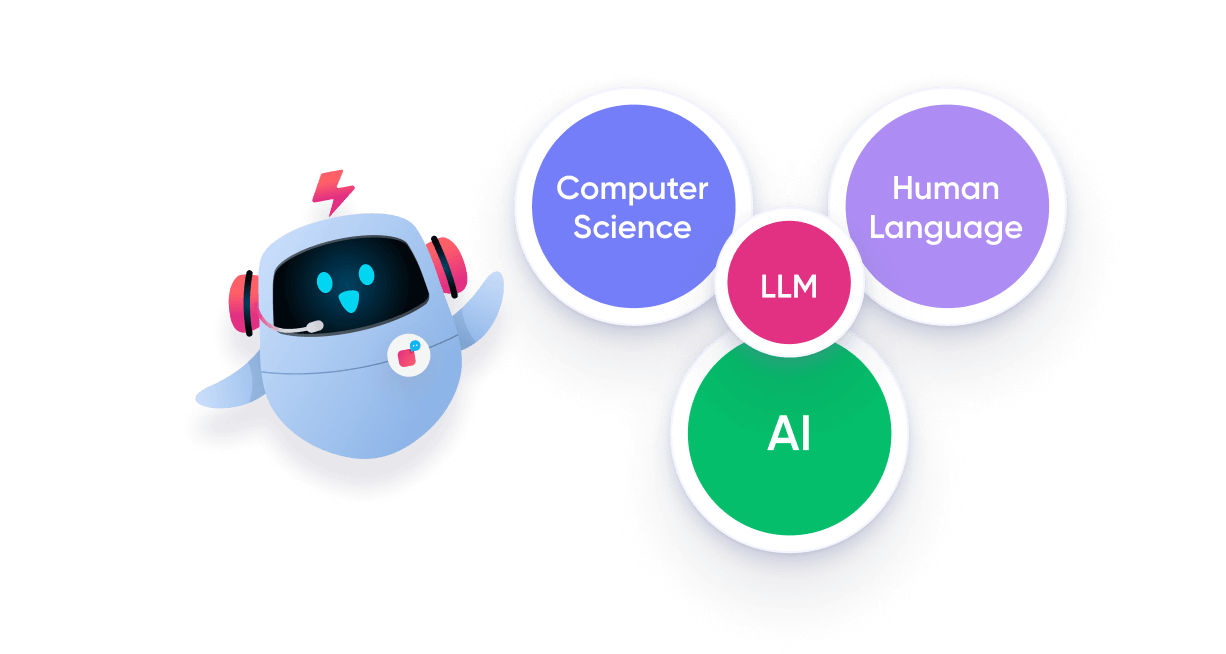
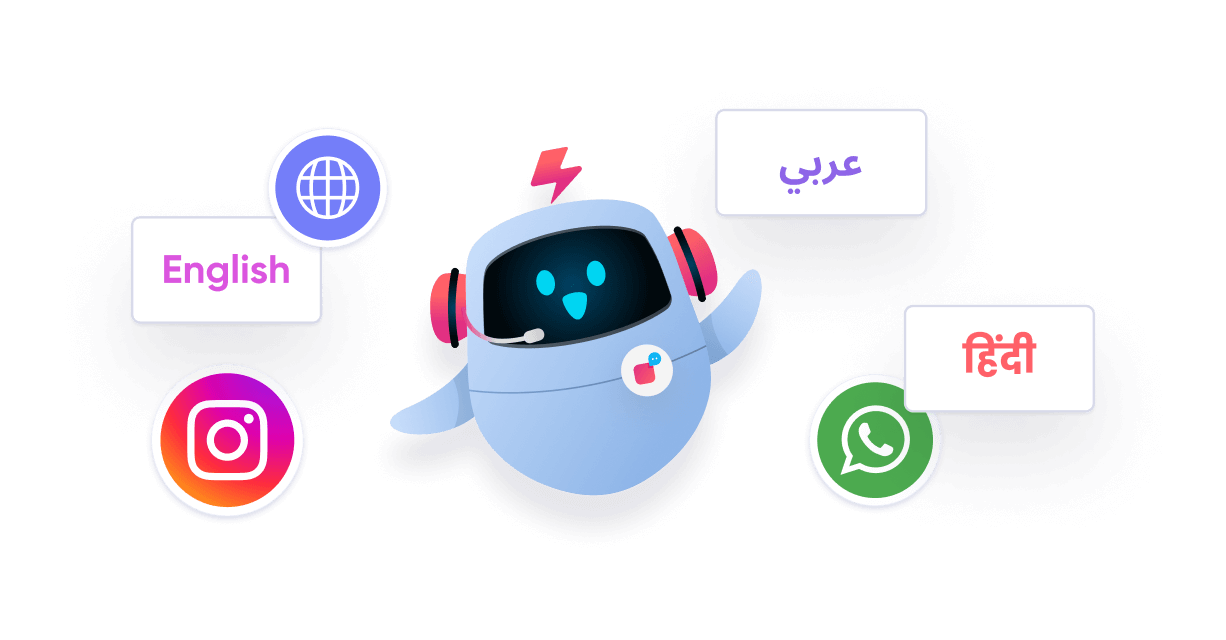
Spreading the word about the product and its new features will add to brand awareness. So, the marketing team must have a clear picture from the very beginning.
Looking forward to revolutionise your customer support with personalised interactions and 24/7 availability? Verloop.io’s Voice AI makes it possible.
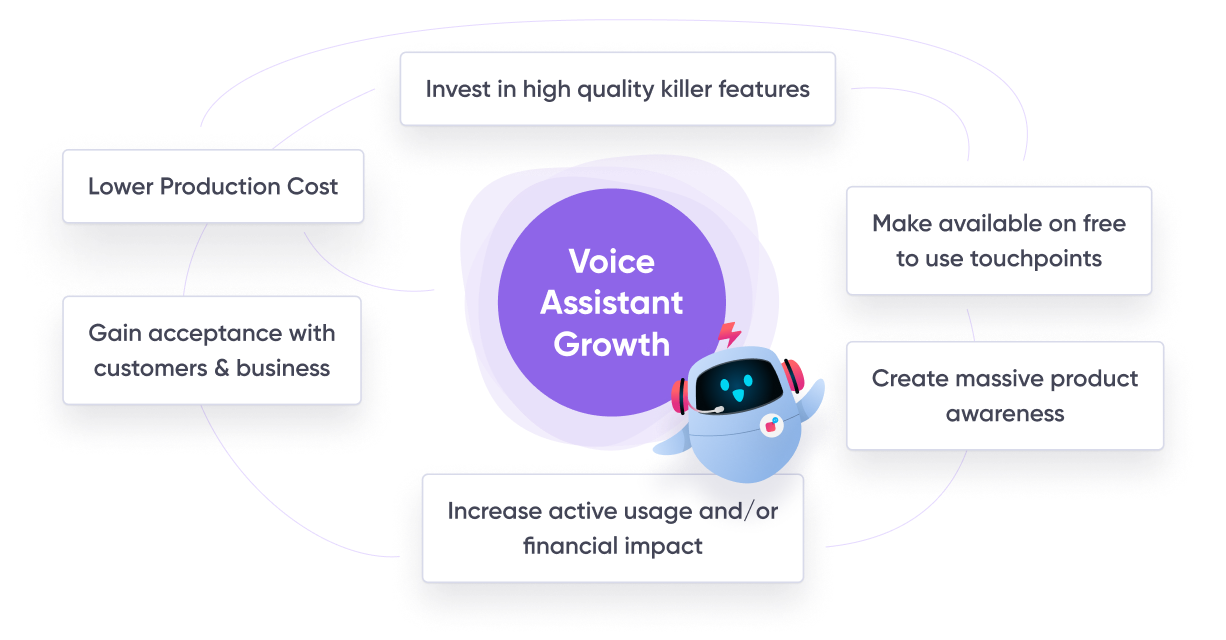
As you may already be aware, speech AI is rapidly expanding. Voice bots are enticing the younger generations because of recent advancements that make them more human-like. According to experts, the worldwide market for conversational AI will experience a large development spurt in the ensuing decades. This technology makes it easier for people to interact with one another while also boosting conversation.
Experts believe that voice recognition devices will soon offer more personalised interactions through speaker verification.
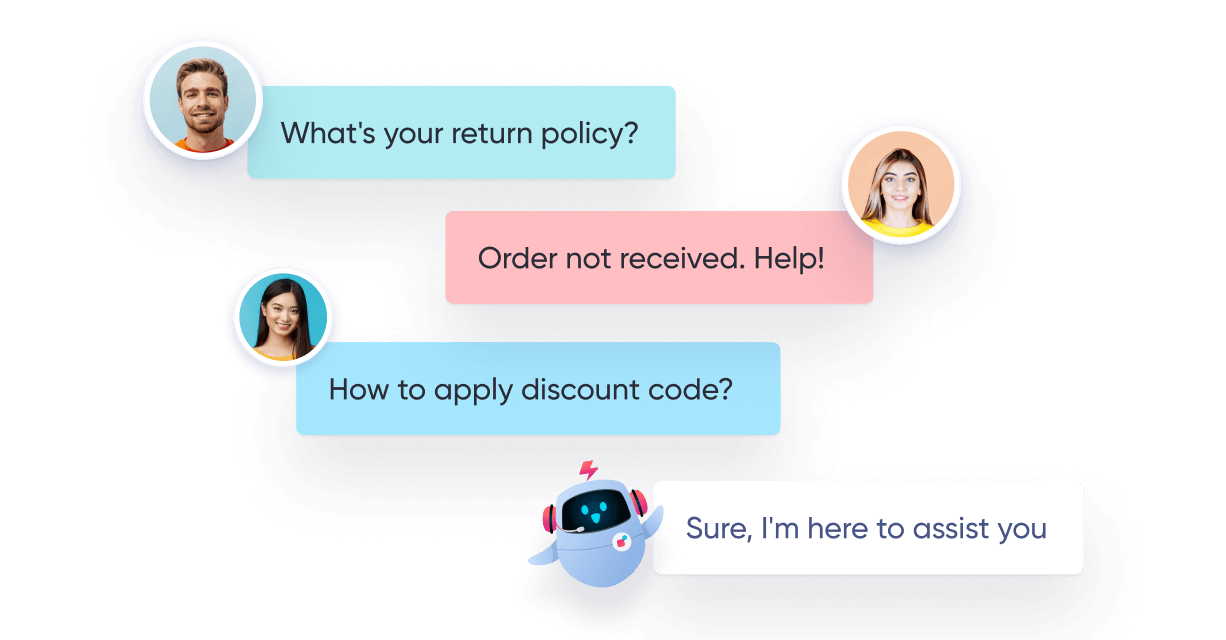

A more human-centric voice experience is crucial to solving issues related to unexpected variables in speech recognition. Such approaches can help children interact with these devices as well.
It is expected that the next age will witness voice recognition devices engaging with users proactively to anticipate and predict what they want.
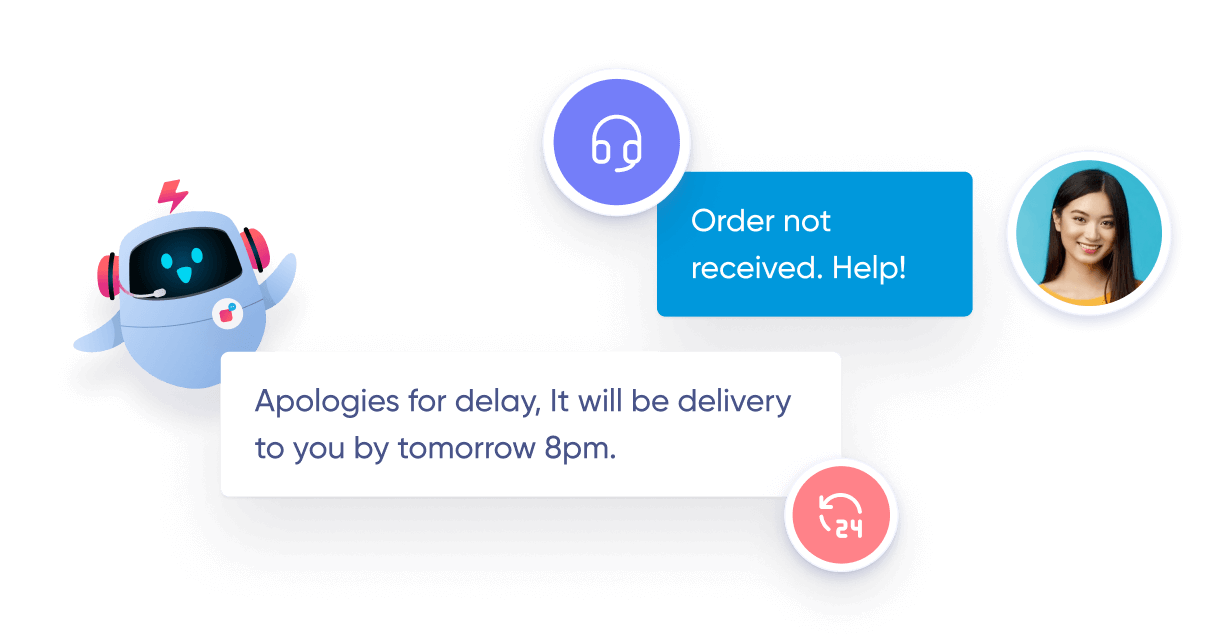
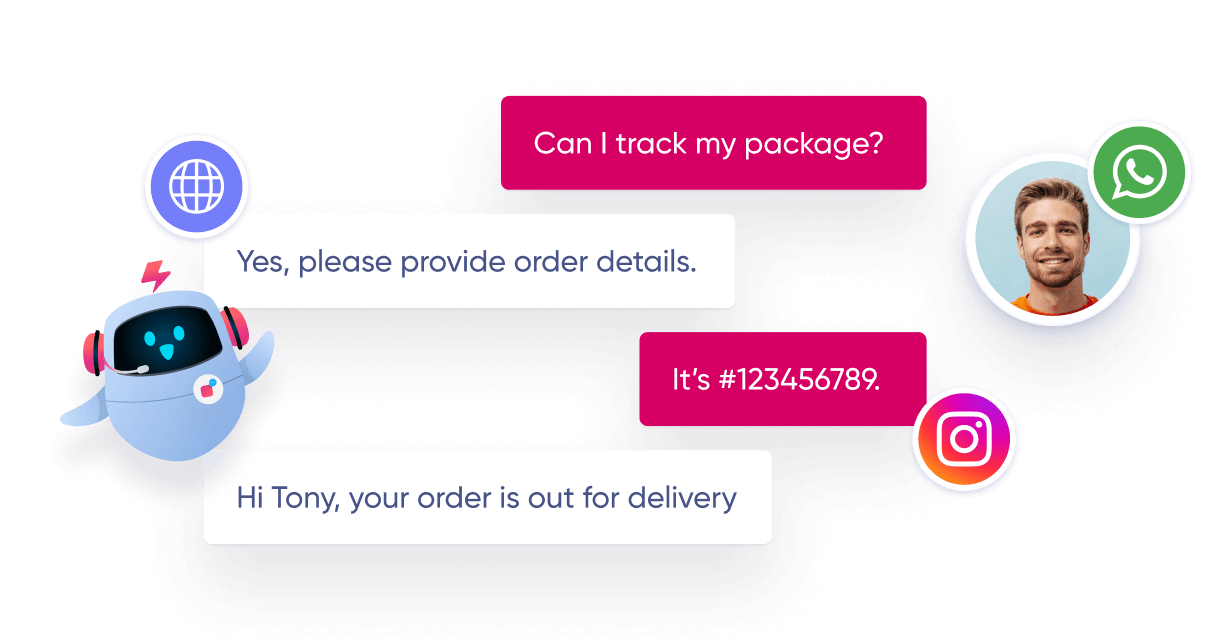
Instead of buttons, touch interactions will come into existence to integrate voice and visual display seamlessly in the near future.
With voice-enabled smart devices in watches, car voice assistants, etc., integration of voice is already a reality everywhere.
To put it another way, Voice AI will soon completely transform the Metaverse ecology.
Suggest Reading: Generative AI An Overview of the Future
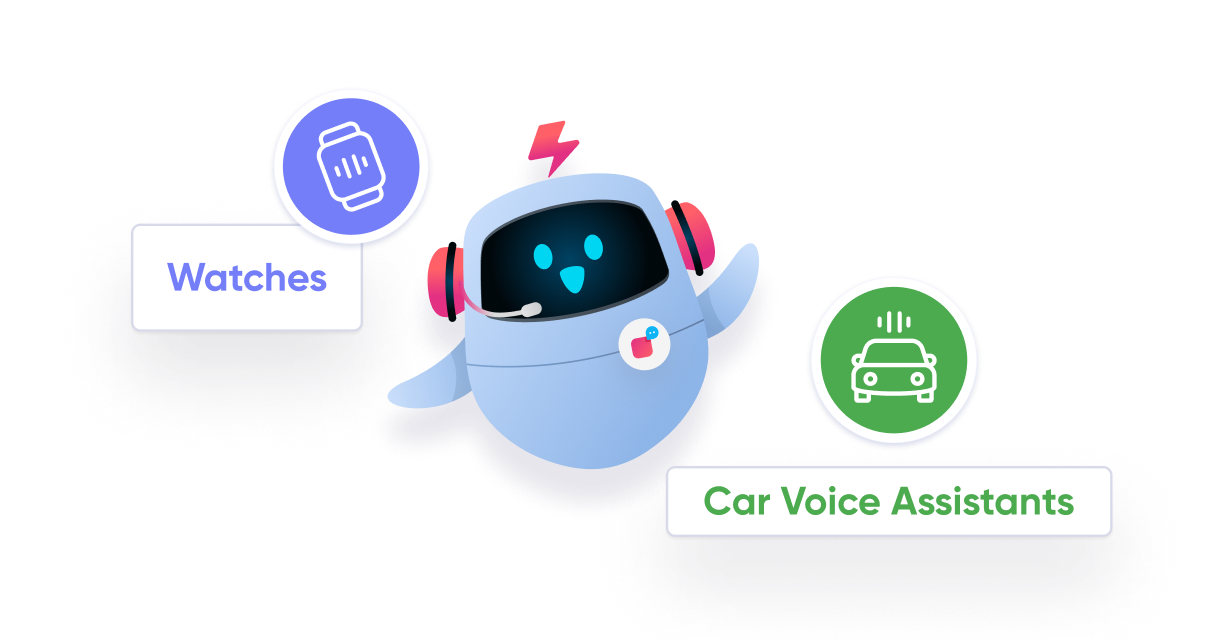
Voice AI has been popularized with the onset of generative AI and has been gaining traction for some time now. The use of Artificial Intelligence (AI) in voice has proved to be quite useful; it is used everywhere, from customer service conversational AI bots to providing audio for YouTube videos. With the enormous multitude of possibilities generated through Voice AI applications, transformations are seen in the way businesses operate and how customer queries are dealt with. Here are some significant real-world examples of voice ai applications in different industries
Just a few years ago, the idea of having Artificial Intelligence emulate the ability of humans to transcribe without minimal error rates seemed too good to be true. However, the AI and Research Team at Microsoft developed an AI solution capable of transcribing with just a 5.9% error rate, at par with professional human transcribers. This technology, rolled out into Cortana, Microsoft’s Voice assistant, and integrated into Xbox Consoles, has also been used to create Dictate, a Microsoft service enabling users to type by speaking. It has been added to several Microsoft products, including Outlook, Powerpoint and Word. Google also incorporated the voice typing solution by Microsoft into Google Docs.


The use of Voice AI in mobile apps has increased dramatically over the past couple of years, expanding the range of the services it could be used for. Expedia, an online travel agency, upgraded their mobile apps to allow users to book flights and hotels using voice commands. Their Voice AI, called Expedia Action integrates Google Assistant to get trip itineraries and review loyalty points and offers. Moreover, the AI bot also provides personalized suggestions and travel destinations and helps users decide their travel arrangement options.
Unilever has made use of IBM’s renowned Watson Assistant to create an HR chatbot capable of assisting employees with queries and other tasks. The conversational AI allows employees to request time-offs, access pay stubs, and provide information about company policies.
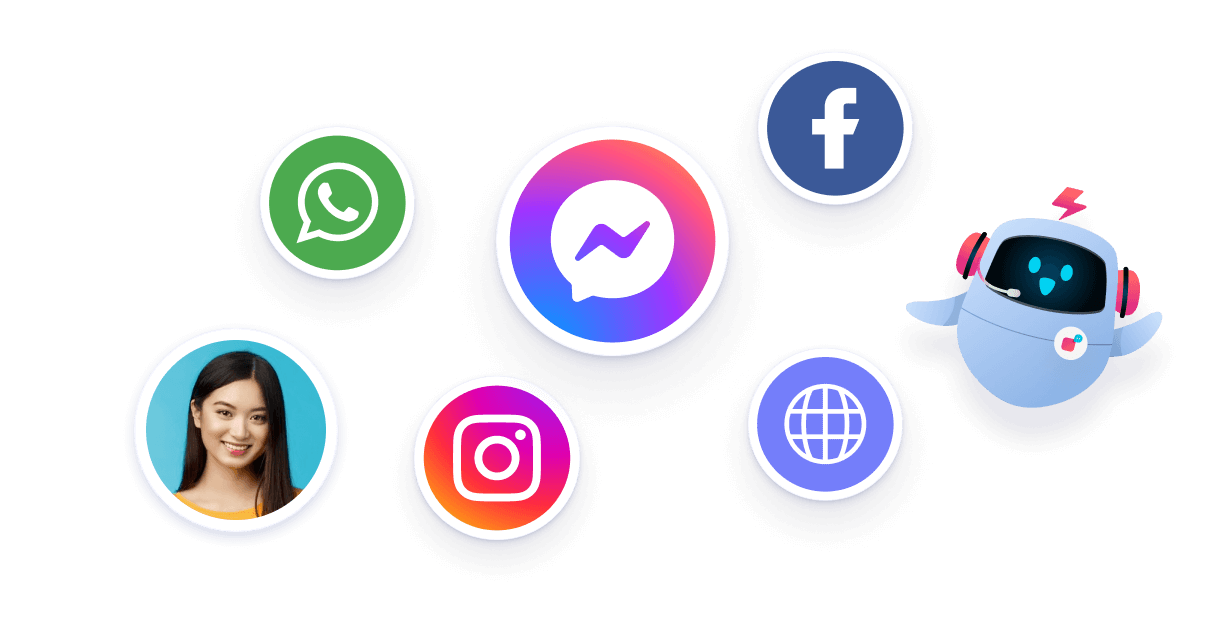

In 2016, GEICO unveiled their voice-enabled virtual AI assistant, called Kate, and it is now used in their mobile app, where it offers insurance advice and provides information about insurance rates. Available 24/7, Kate also helps users navigate through the mobile app and can answer questions regarding current balance status, upcoming due dates, and how to access important related documents.
ROSS Intelligence gained massive popularity when it was launched, as it featured the use of AI to gather relevant case laws and legal documents. With voice recognition integrated with their app, ROSS Intelligence uses the same technology from IBM which infamously beat humans at Jeopardy. The AI can understand natural language and can search through the ROSS database, containing legal documents, along with the source which the user can ‘like’, to save it.


The entertainment industry has witnessed the success of Amazon Alexa and Echo. With just a simple voice command, users can play music, get recommendations for TV shows and engage in immersive entertainment experiences. These smart speakers can also control other smart home products and can turn off the lights, switch on the air conditioning, and do many more tasks.
Companies developing emergency response models, such as RapidSOS have used voice AI to help identify distress calls and send important information, including the caller’s location, to emergency authorities. Thus, voice AI has proved to help boost faster and more effective responses from emergency services.


Popular real estate marketplace company, Zillow, has developed its mobile app to integrate voice ai, enabling users to search for properties and schedule home tours by just using voice commands. This has resulted in the enhancement of the property search experience.
Peloton, a company dealing with digital fitness, has made use of voice AI to assist users during workouts. Users can interact with the voice AI and receive performance feedback as well as view and control several aspects of their fitness routines.


Leveraging voice AI, retailers are transforming the customer journey from start to finish. Instead of sifting through lengthy descriptions and reviews, customers can simply ask a voice assistant for more information. Walmart’s program, Ask Sam, exemplifies this. Ask Sam acts as a voice assistant for store associates, helping them find items, check prices, access schedules, and more.
For customers, voice AI allows them to order items, search for products, add items to carts, and even schedule pickups or deliveries. Ultimately, voice AI is saving both customers and associates time, improving efficiency, and creating a better overall shopping experience.
Many car manufacturers are integrating voice assistants into their vehicles. These features allow drivers to perform various actions hands-free, such as sending text messages, making calls, or adjusting the car’s temperature.
Tesla’s voice commands let drivers control most car features using their voice instead of the touchscreen.
The system understands user requests and performs actions. You can control features like temperature control, navigation, and media playback with voice commands, except for driving-related actions like gear shifting. While voice commands replace many touchscreen interactions, some functions may still require the touchscreen for safety or complexity reasons.
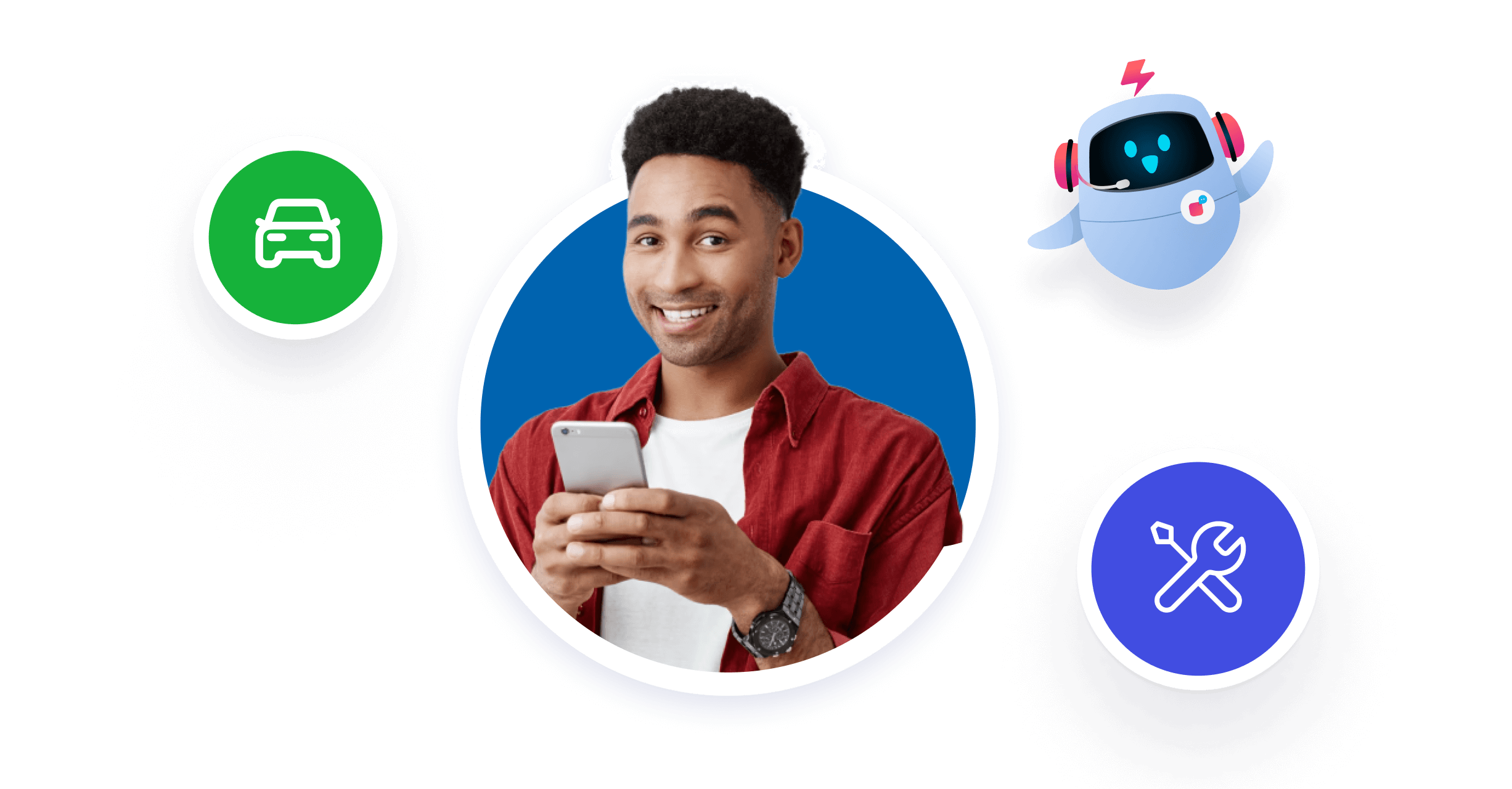
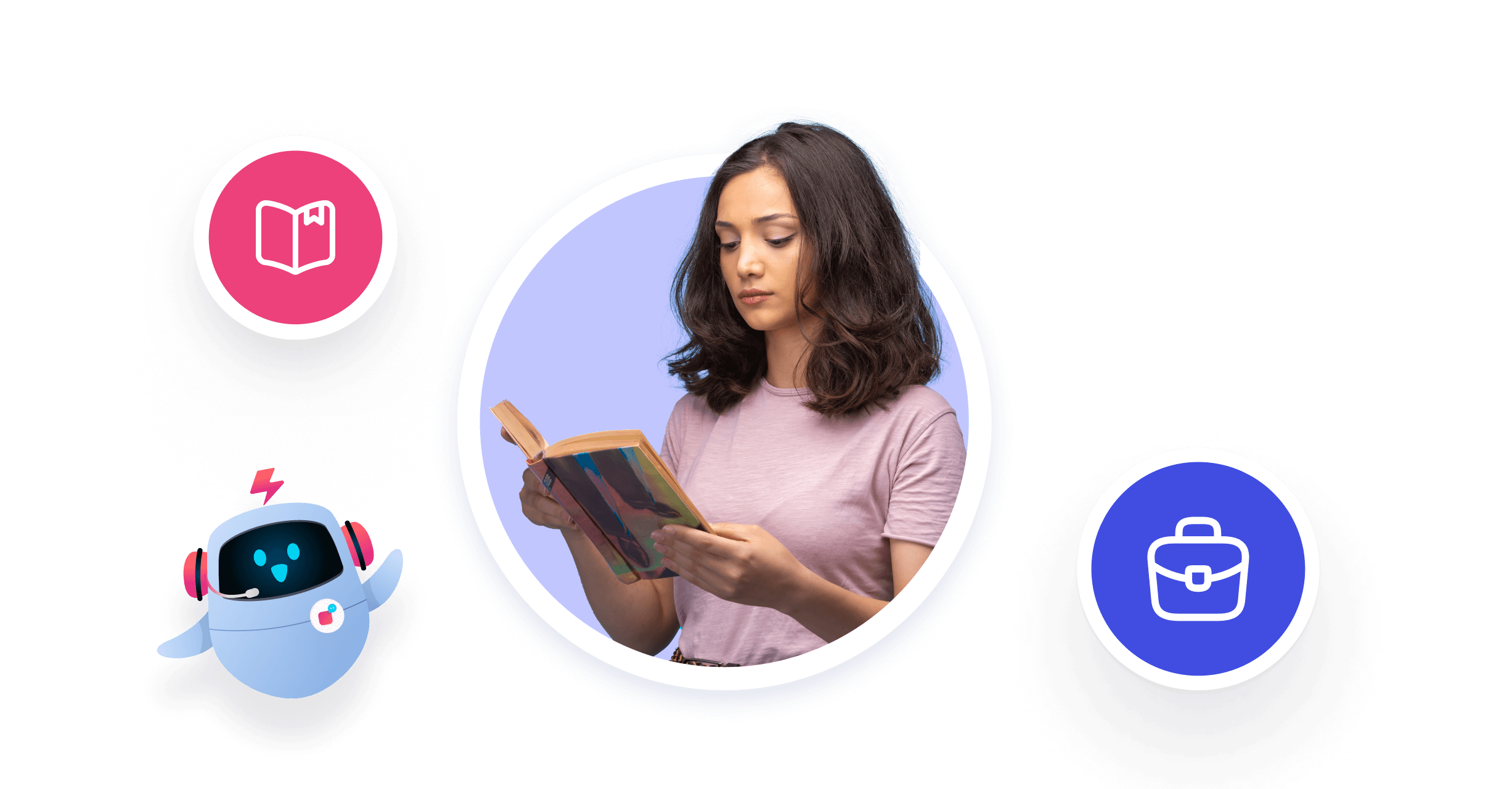
Voice AI is making waves in education, not only by making learning easier through speech analysis but also by providing non-judgmental practice for pronunciation.
Duolingo, a popular language learning app, leverages voice AI to personalize the educational experience for its users. The AI can pinpoint areas where users struggle with pronunciation, such as consonant clusters or vowel sounds, and adjust lessons accordingly.
The AI doesn’t just provide feedback; it delivers targeted insights on grammar, pronunciation, and writing, helping users learn more effectively. It also helps create a more engaging experience by personalising elements like character voices.
Finally, the AI allows Duolingo to offer the Duolingo English Test (DET) securely and at a lower cost compared to a traditional test. Hence Duolingo sees AI as a powerful tool to achieve its mission of making education accessible and effective for everyone.
Bank call centres are adopting voice AI to handle a growing number of customer inquiries. Bank of America launched a voice-powered virtual assistant called Erica for its mobile banking app. Erica assists users with a variety of tasks within the mobile app, including searching transaction history, navigating the mobile app, scheduling payments, managing debit cards and transferring money.

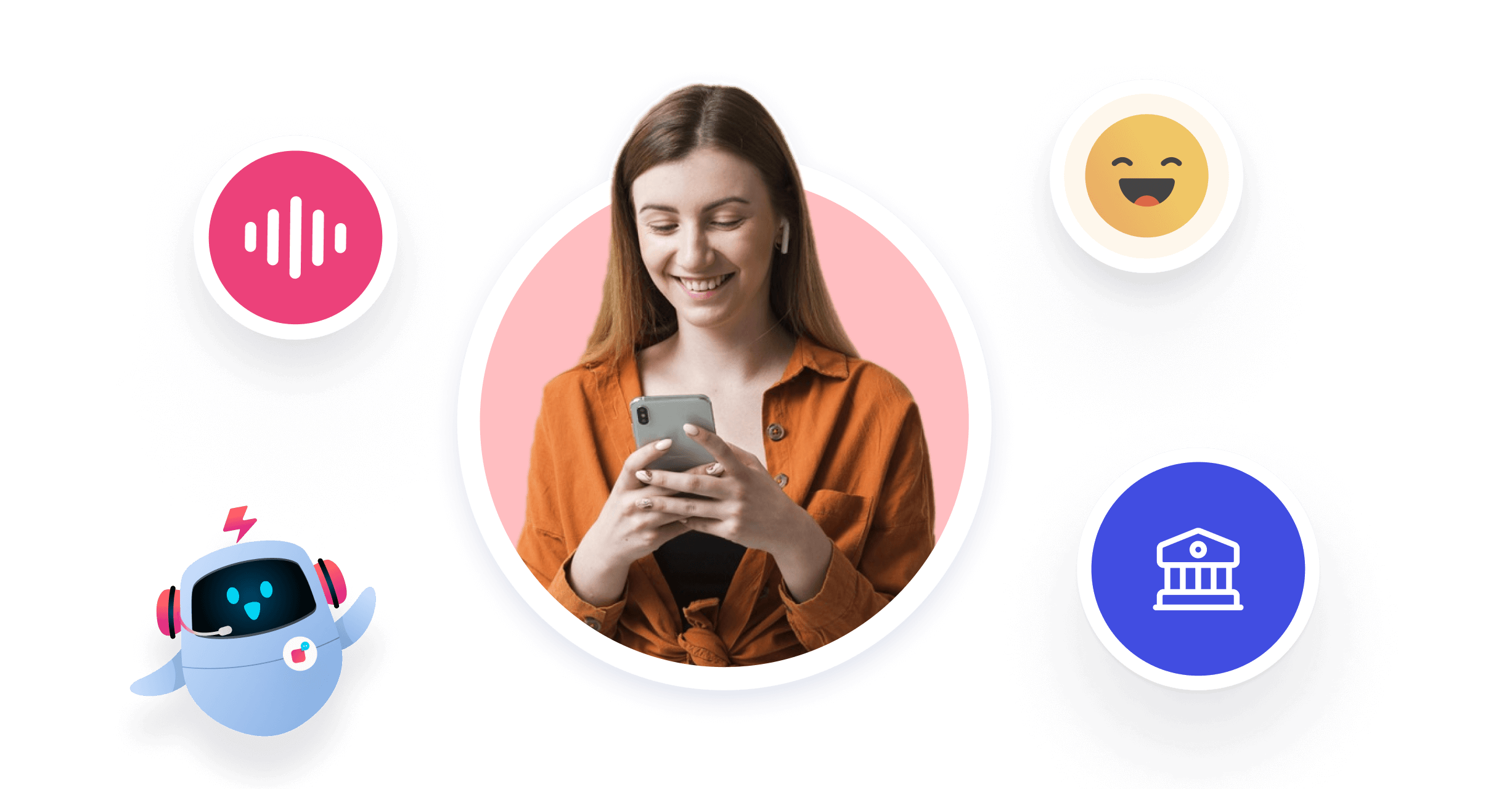
AI-enabled voice assistants have been reshaping the hospitality industry in many ways, from improving guest experiences to unlocking new revenue streams. By leveraging this technology, hotels and resorts have enhanced their service offerings and boosted their financial performance.
Hotels like Marriott are offering outstanding guest experiences with the help of voice AI. The voice assistants assist guests in controlling room lights, and thermostats, and even order room service using voice commands.
Technology has been used by human beings for a plethora of applications in systems and programmes. However, until the advent of Voice AI, engaging in real-time conversations with customers was challenging. Now, users can comprehend complicated human speech thanks to voice artificial intelligence.
Notably, using artificial intelligence in voice systems has led to many studies investigating the effects of having such gadgets engage consumers. With the increasing acceptance of voice assistants, it is no doubt that conversational AI chatbots and Voice Intelligence services have a promising future.